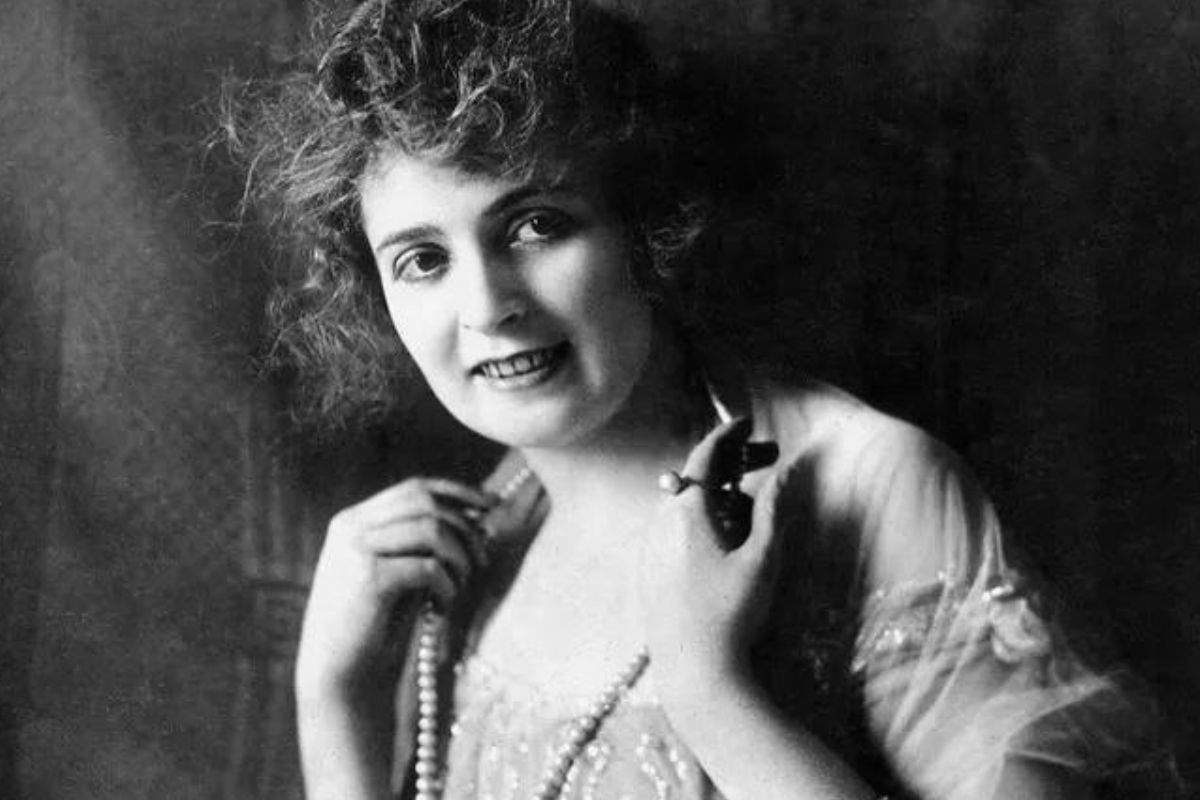Myrtle Gonzalez was a star of the silent screen, a trailblazer for Latina actresses, and a woman of remarkable beauty and talent. Born in Los Angeles in 1891, she starred in over 70 films, mostly short comedies and dramas, and became one of the most popular and versatile actresses of her time. She was known for her expressive face, her adventurous spirit, and her love for nature. But her life was not without tragedy. She married twice, divorced once, and was a mother to a son. Myrtle fell victim to the Spanish flu pandemic of 1918 and died at the young age of 27.
Although her career was abruptly shortened, her impact and influence continue to endure. This piece serves as a tribute to an extraordinary woman who achieved remarkable success in a short yet distinguished career, leaving a lasting impression. It is a must-read for anyone who loves film history, silent cinema, and inspiring stories of women who made a difference.
Birth, Parents, and Education
Myrtle Gonzalez came into the world on September 28, 1891 in Los Angeles, California. Her mom, Lillian L. Cook, was an Irish former opera and popular singer while her dad, Manuel George Gonzalez, was a Mexican retail grocer. She had two siblings, Stella, and Manuel Jr. She showed an early passion for acting and singing and appeared in many local concerts and benefits. She also played juvenile parts on the stage with Fanny Davenport and Florence Stone.
Beginning of Career
Myrtle Gonzalez began her career on stage before transitioning to silent films in 1913. She joined the prestigious Vitagraph Studio, known for its high production values and diverse casting, and quickly established herself as a leading lady. She starred opposite William Desmond Taylor, William Duncan, and other popular actors of the time. She acted in more than 70 films, primarily in short comedies and dramas, and emerged as one of the leading and adaptable actresses of her era. Some of her most notable characters include:
- Enid Maitland in The Chalice of Courage (1915), a six-reel feature-length drama opposite William Duncan. She played a brave heroine who faced many dangers in the wilderness.
- Dolores in Captain Alvarez (1914), a drama directed by William Desmond Taylor. She played a Spanish girl who fell in love with a rebel leader during the Mexican Revolution.
Maria Gonzalez Relationship and Children
Myrtle Gonzalez had two marriages in her life. Around 1910, she wedded James Parks Jones and they had a son named James Parks Jones Jr. After six years, they separated. Later, in 1917, she tied the knot with Allen Watt, who was an actor and director. They remained married until she passed away in 1918. Allen Watt passed away in 1944. His son, James Parks Jones Jr., was also an actor who appeared in several films in the 1920s and 1930s. He died in 1970.
Controversies
She had an affair with Victor Herbert, a famous composer and conductor, who was married at the time. The affair ultimately led to Herbert’s divorce, causing a major stir within the industry and tarnishing both his and Myrtle’s reputation. She encountered discrimination based on her Mexican heritage.
Despite being born in Los Angeles and having Spanish ancestors, she was often stereotyped as a “greaser” or a “femme fatale” in some of her roles. She also faced prejudice from some of her colleagues and critics, who questioned her talent and authenticity.
Myrtle Gonzalez’s Death
Myrtle Gonzalez’s life was tragically cut short by the Spanish flu pandemic of 1918, which claimed millions of lives worldwide. She contracted the deadly virus in October 1918, and succumbed to its complications on October 22, 1918, at the age of 27. She died at her parents’ house in Los Angeles, where she had been staying since her retirement from the screen.
Her untimely passing came as a surprise to both the film industry and her devoted fans, who greatly admired her for her beauty, talent, and ability to tackle various roles. She was one of the early prominent figures to succumb to the pandemic, resulting in widespread grief. On October 24, 1918, her funeral took place at the Church of the Blessed Sacrament in Hollywood.
Bottom Line
Myrtle Gonzalez’s death marked the end of an era in silent films. She had been one of the most popular and prolific actresses of her time, starring in over 70 films in just five years. Not only was she a pioneer for Latina representation in Hollywood, breaking stereotypes and barriers with her diverse and nuanced roles, but also inspired many other actors and actresses, especially those of Hispanic heritage, to pursue their dreams in the film industry. She had left behind a legacy of courage, passion, and excellence that would live on in cinematic history.
















